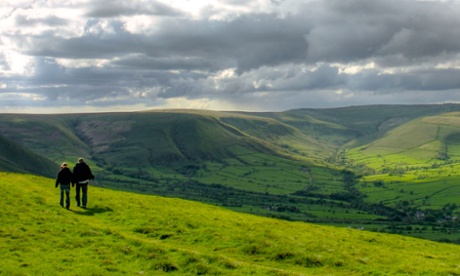
Its style belies its name, and always has done. This is not just a fellowship of bucolic codgers but a charitable countryside access group with a history, present and future bound up with passionate political activism. If it doesn’t look 80, this is because it keeps itself in shape; it has ever since its evolution from the largely communist movements of the 1930s.
Though membership is slightly leaner than it once was – the organisation lost five thousand during the worst of the recession – it stands at 114,000, each individual belonging to one of nearly 500 groups ranged across 50 regions. To anyone noting the irony of its small administrative staff being located in deeply urban Vauxhall, London, it will reply that it is sited on the Thames long-distance footpath. For most of its life it has been the Ramblers’ Association, only rebranding itself as the less formal Ramblers in 2009.
Footpaths have always been at the heart of the Ramblers’ mission and remain steadfastly there today. The last 15 years have seen several Ramblers-lobbied milestones passed: the 2000 Countryside and Rights of Way Act, extending walkers’ rights of access to open countryside in England and Wales; the Land Reform (Scotland) Act 2003 granting statutory access rights to almost all land north of the border; the Marine and Coastal Access Act 2009.
Together with the effects on footpaths of the HS2 railway route, the implementation of the 2009 Act is the largest item on the Ramblers’ present agenda. In the increasingly crowded Britain of the postwar years, it is aware of the difference between an Act and the actuality. Add to this the overstretched and under-resourced local authority staff who are meant to enforce rights of way and you have the recipe for some classic rural encounters.
Right of way issues have always been at the heart of Ramblers’ practice. A walker follows a right of way clearly marked on his Ordnance Survey map. It crosses a field, or would have done if the field had not been ploughed up, perhaps years ago. The walker complains that the path has gone, the farmer replies that there is no path because it is a turnip field, and the stage is set for a barbed exchange about usage, diversions and definitive maps. It rapidly becomes both arcane and existential, sometimes comically so. Yet this is serious stuff, for in every such spat can be heard echoes of the great Kinder Scout trespass of 1932, when a group of ramblers, organised by the British Workers Sports Federation, gathered on this lofty, magnificent but privately owned (by the Duke of Devonshire) sweep of Derbyshire grouse moor. With the jailing of five men, including the trade union leader Benny Rothman, the access movement had a kind of martyrology.
From this high point flowed the formation of the Ramblers Association on 1 January 1935, with the journalist and rambler Tom Stephenson’s article in the Daily Herald proposing a Pennine Way following later in the same year. By 1949 the parliament of the Attlee government – many of whose cabinet members were keen country walkers – was passing the crucial National Parks and Access to the Countryside Act.
Every so often the Ramblers organisation breaks cover to the open ground of tabloid attention when a famous person or a bounder with a big estate tries to extinguish a right of way to enhance their privacy. And in recent years the organisation has not been coy about its own use of celebrity, with a string of presidents including Janet Street-Porter, Floella Benjamin, ex-minister Chris Smith and TV presenter Julia Bradbury. This is not to question the sincerity of such incumbents, but when Kate Ashbrook was announced as the new president in April 2012, it was widely seen as a return to the tradition of such activists as Stephenson. Ashbrook has spent the past 30 years as the dogged and radical head of the Open Spaces Society, taking on such big rural beasts as Paul Getty, the Rothschilds and Nicholas van Hoogstraten. If she doesn’t know her way round the tangled paths of access politics, no one does.

